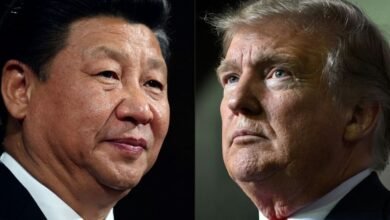China Unveils AI Vision at Global Summit

▼ Summary
– China released its “Global AI Governance Action Plan” shortly after the Trump administration’s AI policy, signaling potential strategic timing during the World Artificial Intelligence Conference (WAIC).
– The WAIC event emphasized global cooperation and AI safety, contrasting with the US’s “America-first” approach, as highlighted by Chinese leaders and researchers.
– Chinese AI experts, including Zhou Bowen and Yi Zeng, advocated for government oversight and international collaboration on AI safety and regulation.
– Closed-door discussions at WAIC suggested a shift in AI governance leadership, with China, Singapore, the UK, and the EU taking the lead due to limited US participation.
– Despite differing political systems, both China and the US share similar AI safety concerns, such as model hallucinations and cybersecurity, leading to converging research efforts.
China has taken center stage in global AI governance discussions with the release of its comprehensive policy framework at the World Artificial Intelligence Conference (WAIC) in Shanghai. The event, attended by prominent figures like Geoffrey Hinton and Eric Schmidt, showcased China’s push for international collaboration, a stark contrast to the U.S.’s more insular approach under the Trump administration.
Premier Li Qiang set the tone in his opening address, emphasizing the need for worldwide cooperation to address AI’s challenges. Chinese researchers followed with technical presentations on pressing issues, many of which remain overlooked in American policy debates. Zhou Bowen of the Shanghai AI Lab highlighted his team’s safety research, advocating for government oversight of commercial AI systems to identify vulnerabilities.
Yi Zeng, a leading AI expert at the Chinese Academy of Sciences, echoed this sentiment in an interview, calling for cross-border collaboration among safety organizations. “Bringing together institutions from the UK, U.S., China, and Singapore would be ideal,” he noted. Behind closed doors, policymakers and industry leaders discussed regulatory strategies, with observers noting the absence of U.S. representation. Paul Triolo of DGA-Albright Stonebridge Group pointed out that without American involvement, a coalition led by China, the EU, and the UK may now steer global AI safety efforts.
Western attendees were struck by China’s intense focus on regulation. Brian Tse of Concordia AI remarked that safety discussions dominated the agenda, unlike at other international summits. His organization even hosted a separate forum featuring AI luminaries like Stuart Russell and Yoshua Bengio, further underscoring China’s commitment to the topic.
The shift in priorities between the U.S. and China is striking. While American policymakers push for AI models to “pursue objective truth”, a move critics call ideologically driven, China’s plan advocates for UN-led global governance and stronger governmental oversight. Despite political differences, experts note both nations face similar risks: model hallucinations, bias, cybersecurity threats, and existential dangers.
As Tse observed, since both countries develop AI using comparable methods, their societal impacts and risks align closely. This convergence extends to research areas like scalable oversight and standardized safety testing, suggesting that despite geopolitical tensions, technical collaboration remains possible. The question now is whether these parallel efforts can bridge divides or deepen them further.
(Source: Wired)





